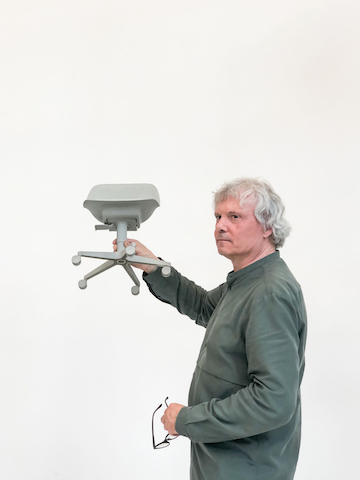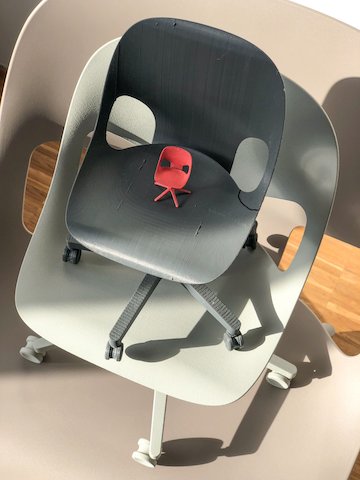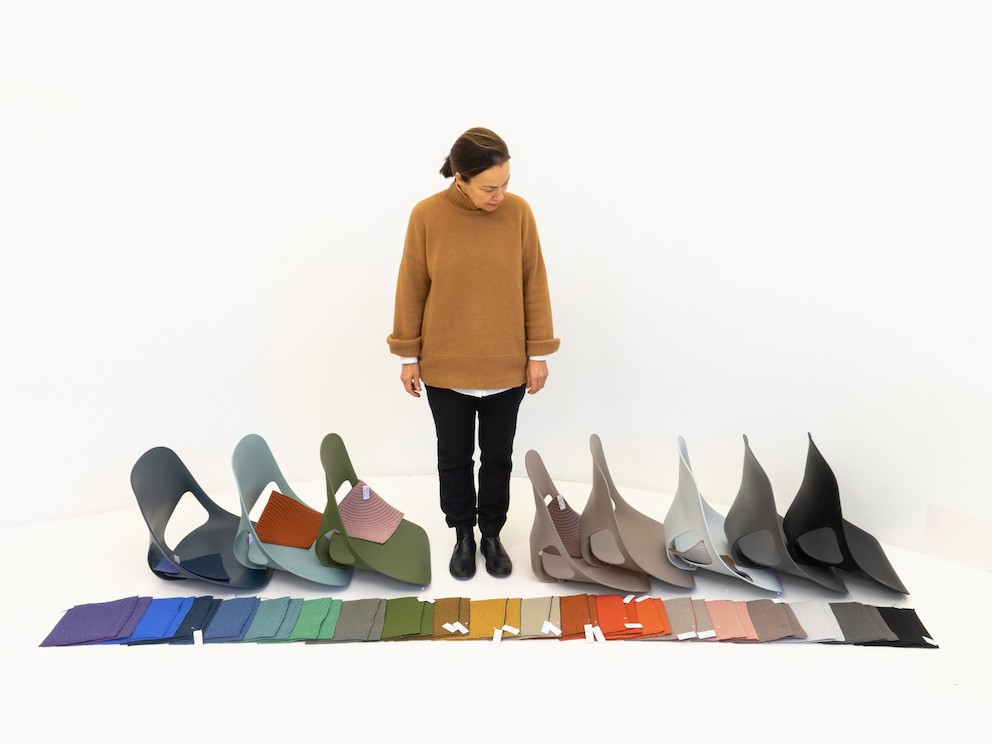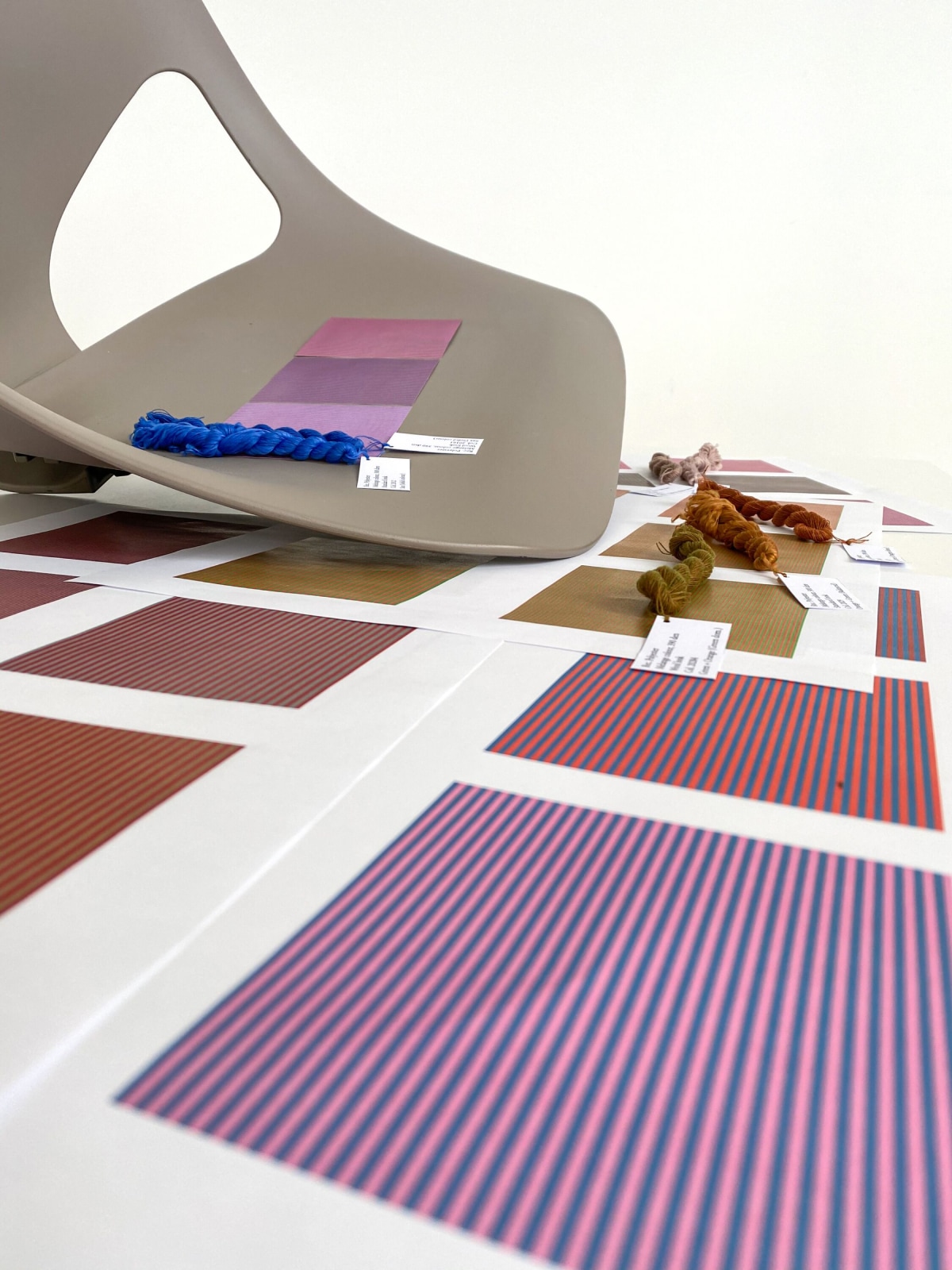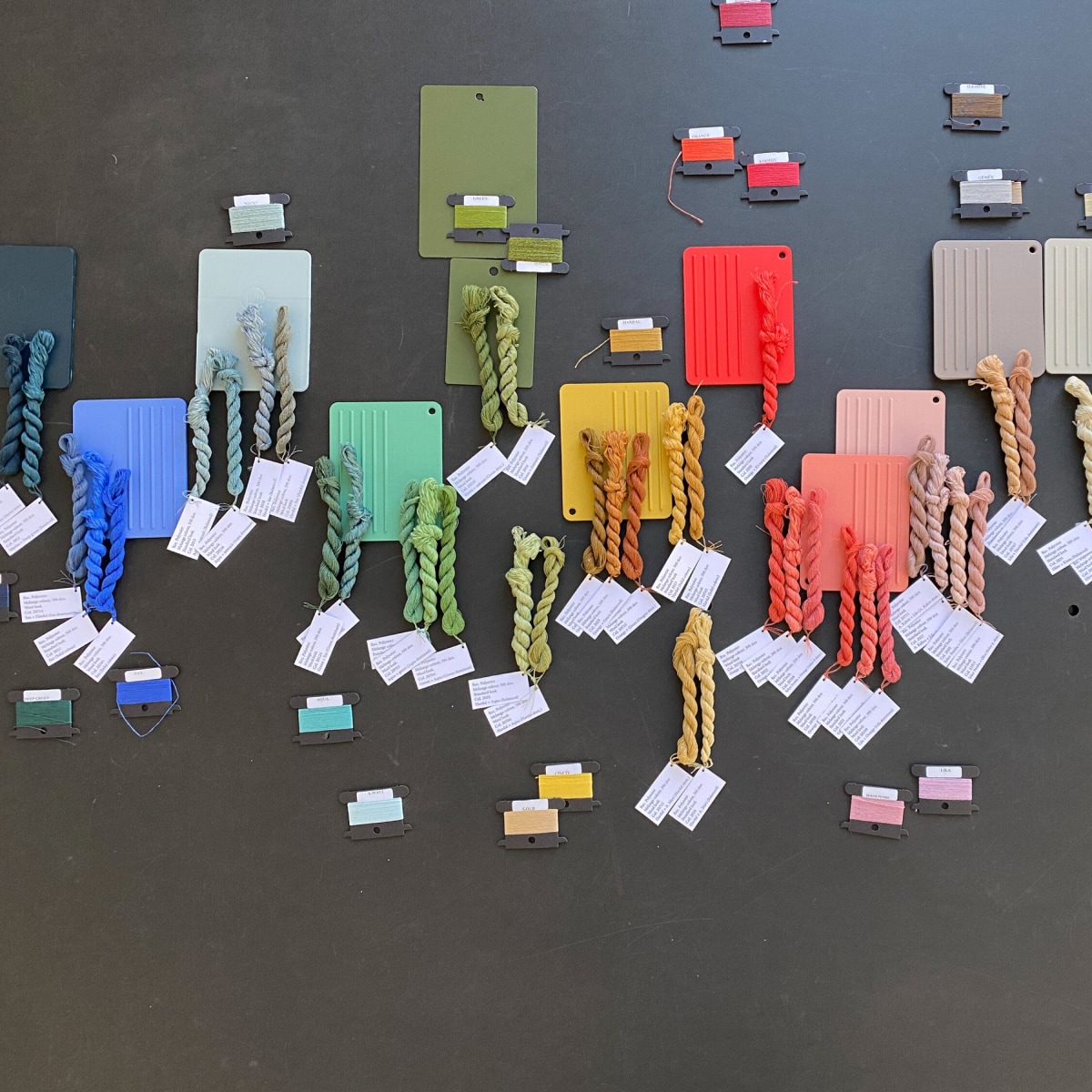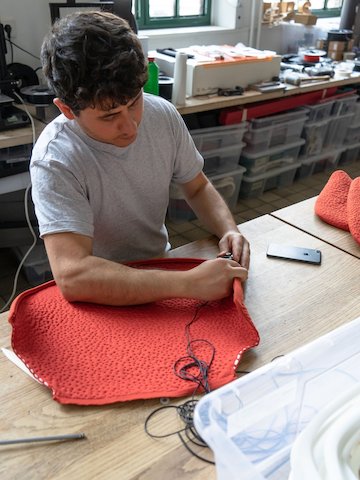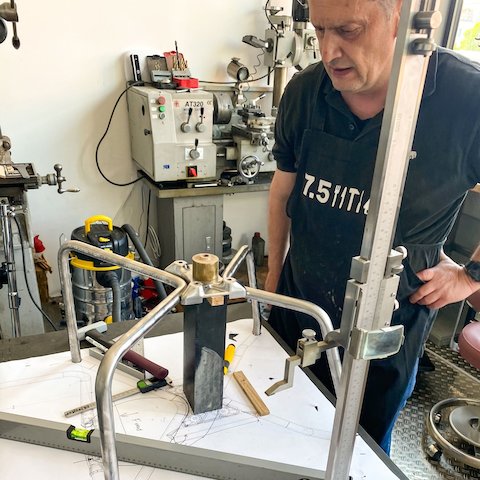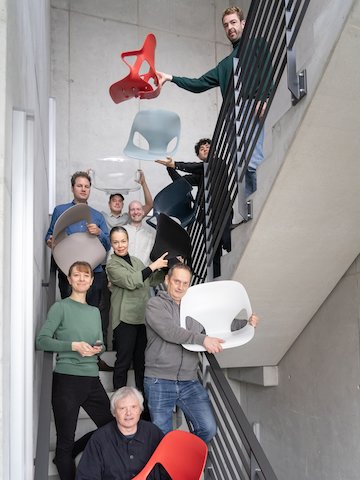Studio 7.5 called the instant, personalised comfort of their last chair for Herman Miller, Cosm, their holy grail. How, then, to follow such a crowning achievement? Instead of looking to the present, the Berlin-based studio imagined the future, finding initial inspiration for the Zeph Chair with the help of their students at the Berlin University of the Arts and the Weissensee School of Art and Design Berlin.
“Students invest in their laptop, they invest in their bicycle, but most of the time, they’re not initially investing too much in a seating tool,” says Carola Zwick, who helms Studio 7.5 with Burkhard Schmitz and her brother Roland Zwick. “It might be the first investment after their first pay cheque, so for that and for institutions like our universities where students are spending all of their time, we were longing for a product that could be a decent, honest, simple tool that would get the most important things right.” Schmitz adds that the goal wasn’t to create a “budget” chair, but to boil down the true essence of an ergonomic chair.
The trio and their small studio were equally interested in Herman Miller’s 100-plus-year legacy, particularly two exemplary archetypes from the company’s back catalogue: iconic mid-century chairs, such as the Eames Shell, and 30+ years of advancements in ergonomic seating. “The two branches haven’t always spoken to one another,” Carola says. “There’ve been times at Herman Miller where there was a pendulum swinging from one end to the other, but there was no middle ground. We wanted the chance to provide something that would bridge the two.”
It was, Burkhard admits, a “hard nut to crack”. They did it by animating a shell chair so it could offer not only the inherently joyful aesthetics that come with its visual language, but ergonomic benefits too. They created ample 3D-printed prototypes via trial-and-error iterations, some of which “looked like something out of a Tim Burton film”, Carola laughs, until they landed on a one-piece seat and back that actually moves with the person sitting in it. While most shell chairs are static, the Kinematic Monoshell on Zeph offers a natural recline that uses the sitter’s natural pivot points to create the right counterbalance.
The expansive colour palette also took inspiration from the past. “One of the things we wanted to pick up from the mid-century era was the optimistic and delightful idea of the future – we wanted to be a bit more playful and happy,” Carola says. They call the palette the “crayon box”, and it’s intended not to be prescriptive, but inviting for a variety of tastes, and to let people have some fun.
Throughout the process, they kept their students and initial goals for the project in mind, knowing that this mixture of joy and ergonomics couldn’t come at too steep a price tag. “I remember touring for Mirra or Setu and finding that a lot of people were enthusiastic about the chair but they’re like, ‘Okay, now I have to save three monthly loans to be able to afford it,’” Roland says. “So we came up with the idea of wanting to have a more democratic chair.” Carola chimes in, “A solid entry-level experience.” Burkhard, finally, summarises Zeph: “An entry-level experience worthy of the Herman Miller name.”
